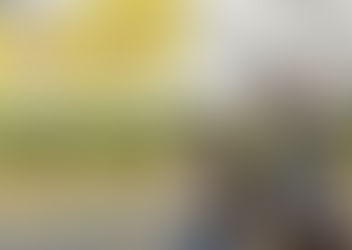Got Pollinators?
- Pollinator Project RV

- Sep 19, 2021
- 4 min read

by Kristina Lefever
We are super happy that we have been seeing more butterflies and moths around our garden this summer and fall - right here in the heart of Phoenix! Seeing a variety of these winged jewels means that our landscape is starting to become an ecosystem, albeit a tiny one, with host plants that serve the caterpillars. Yes, "host" means the plant will get eaten! Some Lepidoptera (butterflies and moths) are specialists, like the monarch with its single host plant, milkweed ..... we sure wish our milkweed had been eaten this summer. Others, like the gorgeous West Coast Lady and the Buckeye butterflies who recently graced our side garden, are amenable to a varied diet in the larval stage.
OK, granted, not all caterpillars are 'good' guys (even I get irritated by holes in my kale leaves!), and some moths are not even pollinators (some species don't eat in the adult stage so they don't visit flowers). But regardless, all butterflies and moths fill a niche in the ecosystem (eg, I have seen finches pecking those pesky green 'worms' off the kale leaves!). So, thinking beyond the flowers, helping our gardens nurture all stages and species of the pollinator / insect lifecycles means there will be food for birds, other insects, and even lizards! Enjoy our growing photo album of pollinators and more!
Of course, the bees are always exciting, and we love seeing so many of the small (some are tiny!) native bees on the flowers of our plants - the Grindelia nana (Idaho gumweed) is quite the go-to flower! We are also thrilled also see digger, mining, sweat, wool carder, and leaf cutter bees, along with several species of bumble bees, including the handsome Brown-belted Bumble Bee. And the best part is that we know they are nesting around the property - we even discovered one female mining (?) bee making a nest in the sidewalk! (It's often difficult to identify the smaller bees to species without capturing them, chilling them, and and looking at them under a magnifier - and then releasing them!)
Hoverflies are becoming quite common here, which is good, as they are the best pollinators after bees. There are many numerous species, so they can vary in size and color, but you can usually spot them - hovering! - as if they are trying to decide where to land. These bee-mimics bring a bonus to your garden - in the larval stage (ie, small 'worms'), they eat lots of aphids and other tiny pests, so look carefully before squishing the afore-mentioned green 'worms'. (Hoverfly larvae are pale green with a white stripe - see photo in album).
We appreciate the several species of wasps we've seen - good guys, because they "clean up" dead things, and/or take out the bad guys.
Looking closely, we have seen a beautiful lacewing (a predatory insect), not to mention leafhoppers and some other unknown 'bugs'.
Beyond the insect world, we occasionally see a hummingbird or two flit through the garden. But now that we have a hummingbird feeder in place, thanks to our wonderful friend Deb Vroman, we are seeing them regularly! (But have yet to prove this with a photo.)
For the last 2 years we have been counting the pollinators and other insects we see in our gardens, so we can determine how the numbers of species and the actual numbers evolve over time, as well as within the different seasons of the garden. We have completed our fifth Pollinator Count for this summer, about a month apart and each about 15 minutes, following up on the two Counts we did last year.
Perhaps you would like to undertake your own Citizen Science! It's best to schedule the monitoring once or twice a year at least, at more or less the same time. Find a place in your yard or neighborhood that you can walk for the same amount of time at each session, that either does or will have flowering plants blooming most of the year. It's easier with at least 2 people, scanning only about 3 feet out and trying not to count the same insect twice (not always easy). You'll want to document your findings over time - we took this excellent Monitoring Protocol from the Xerces Society and revised the tracking form to fit our purpose and garden area, as you can see in the album of our Pollinator Counts. You may also want to take photos of the insects you see. Not surprisingly, we are finding more of everything in this garden now! Compare a 'before' photo in Spring 2019 .......

with one from June 2021

We are very thankful to continue to have the support of the community that helps maintain our gardens here at The Pollination Place. Yes, this is a demonstration garden growing native plants, but it is also growing community. We are thankful for the volunteers who help us tend the garden, create educational materials, and more. We are thankful to be able to collect seed to grow them out for more plants, or to package them, for sales or donations to the community. We are thankful for all of you who are supporting us on this journey. And, of course, we are thankful for the pollinators, who bring us such joy in our gardens.




























Comments